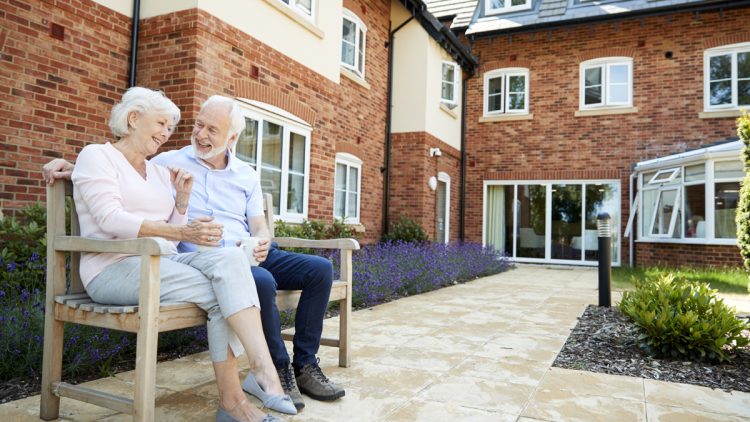What is Assisted Living in Arizona?
Here’s a breakdown of what assisted living typically entails:
Living arrangements:
- Residents live in private apartments or rooms within the community, ranging from studios to one-bedroom units.
- These spaces are designed for safety and comfort, often featuring grab bars, emergency call systems, and wider doorways.
Services and support:
- Assistance with daily living activities (ADLs): This includes help with bathing, dressing, toileting, eating, and medication management.
- Meals and dining: Most communities offer three daily meals prepared fresh on-site, catering to various dietary needs and preferences.
- Housekeeping and laundry services: Maintain a clean and comfortable living space without the burden of chores.
- Transportation: Scheduled shuttles or on-demand services may be available to help residents get to appointments, grocery stores, or other destinations.
- Social activities and events: A vibrant calendar of events keeps residents engaged and connected, featuring game nights, fitness classes, movie screenings, educational workshops, and more.
- 24-hour security and staff: Ensuring safety and peace of mind with on-site staff and emergency response systems.
- Optional services: Additional services like personal care assistance, beauty salon services, and physical therapy might be available for an extra fee.
Who is assisted living for?
It’s suitable for individuals who:
- Need some help with daily activities but want to retain as much independence as possible.
- May experience mild memory loss or cognitive decline.
- Feel isolated or unsafe living alone.
- Require medication management assistance.
- Want access to social activities and a supportive community.
Benefits of assisted living:
- Enhanced safety and security: Knowing help is readily available provides peace of mind for both residents and families.
- Reduced stress and burden: Assistance with daily tasks frees up time and energy for leisure activities and social interaction.
- Improved quality of life: Engaging activities and social connections combat loneliness and isolation, promoting overall well-being.
- Tailored care: Personalized care plans ensure residents receive the level of support they need.
- Potential for delayed transition to nursing care: Assisted living can help individuals maintain independence for longer and may postpone the need for skilled nursing care.
Making the decision:
Choosing an assisted living community involves careful consideration of factors like location, services offered, amenities, cost, and overall atmosphere. Visiting communities and talking to residents and staff can help you find the best fit for your needs or those of your loved one.
Remember, assisted living can be a valuable resource for individuals who need some support while maintaining their independence and enjoying a fulfilling life.
I hope this information gives you a good understanding of what assisted living entails! Feel free to ask if you have any further questions or want to delve deeper into specific aspects.
According to NCAL, “Assisted living is part of a continuum of long term care services that provides a combination of housing, personal care services, and health care designed to respond to individuals who need assistance with normal daily activities in a way that promotes maximum independence.”
Does Medicare Pay for Assisted Living in Arizona?
No, Medicare typically does not pay for assisted living. Assisted living facilities provide housing and assistance with daily living activities, such as bathing, dressing, and medication management, which are considered custodial care. Medicare primarily covers medically necessary services and doesn’t typically cover custodial care.
Here’s a breakdown of Medicare coverage in relation to assisted living:
- Part A (Hospital Insurance): Covers inpatient hospital care, skilled nursing facility care (short stays for specific recovery needs), hospice care, and some home health care. Some limited nursing care services within an assisted living facility might be covered under Part A if they meet specific criteria and are provided by a certified home health agency.
- Part B (Medical Insurance): Covers doctor visits, outpatient services, preventive care, and some durable medical equipment. This coverage wouldn’t extend to general assisted living costs.
- Part C (Medicare Advantage Plans): These private plans offered by Medicare-approved insurance companies may offer some additional benefits like limited meal assistance or transportation, but they generally won’t cover assisted living costs either.
However, there are some exceptions and alternative options to consider:
- Short-term stays for skilled nursing care: If you require a short stay in an assisted living facility for skilled nursing care like wound care or physical therapy after a hospital stay, Medicare Part A might cover it for a limited period under specific conditions.
- Medicaid: While Medicaid itself doesn’t directly cover assisted living, some states offer Medicaid waiver programs that can help pay for assisted living services for individuals who meet certain income and eligibility criteria.
- Long-term care insurance: Private long-term care insurance policies can help cover assisted living costs, but it’s crucial to enroll in such plans while you’re still healthy and premiums are typically more affordable.
Overall, it’s essential to remember that Medicare generally doesn’t cover assisted living. Carefully research and understand your options, including Medicaid eligibility or private insurance, to determine how to best finance assisted living if it becomes necessary.
Does Medicaid Cover Assisted Living in Arizona?
General Medicaid Coverage:
- Standard Medicaid programs primarily focus on medical care in skilled nursing facilities or home health settings, not assisted living’s custodial care (daily living assistance).
The Hope in Medicaid Waiver Programs:
- Many states offer Medicaid waiver programs that act like lifelines for assisted living costs. These programs allow states to use federal Medicaid funds to provide home and community-based services, including assisted living, for individuals who meet specific eligibility criteria.
- Each state’s waiver program has its own rules and eligibility requirements regarding income, disability, and care needs.
Exploring Your Options:
- To see if you qualify for a waiver program, contact your state’s Medicaid agency or visit the Medicaid.gov website for program details.
- Remember, eligibility doesn’t guarantee immediate placement, and waiting lists might exist.
Alternative Paths:
- Consider exploring private long-term care insurance, ideally purchased when you’re younger for better premiums.
- Research financial aid options offered by specific assisted living communities.
Remember, navigating assisted living options can be complex. Don’t hesitate to seek guidance from local agencies, eldercare advocates, or financial advisors experienced in senior care.





